- Mar 7, 2023
How Expert Anglers Track Spring Crappie Movements
Learn how to gauge conditions to find the most productive waters for spring crappie fishing and how to present crappie baits to catch the most fish.
Crappie and anglers alike contract spring fever when the days and nights get warmer and length of daylight increases.
Despite an adage that correlates the best spring crappie fishing with blooming dogwoods, savvy anglers know that crappie break out of their winter doldrums and start biting well before the dogwoods show their prettiest colors. We spoke with crappie experts Lee Pitts, Dustin McDaniel, Tim Hebert and Terry Blankenship about the key factors that trigger the best springtime crappie bite on their home waters and how they approach spring fishing.
Water Temperature
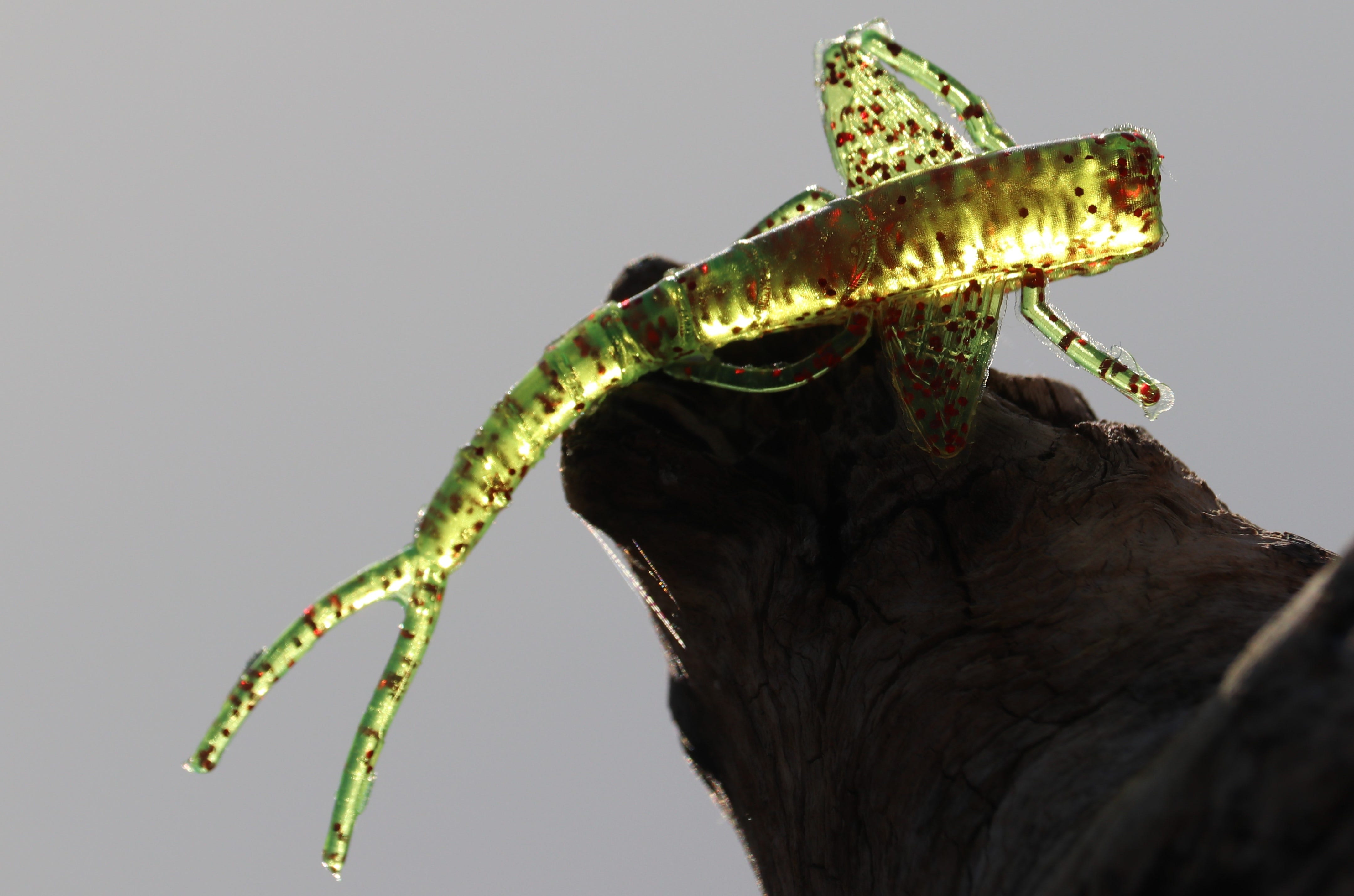

“Water temperature here plays a big part in it,” Alabama guide Lee Pitts said. “Normally, if no major front comes in beforehand, 53 to 56 degrees is when the fish start to make their move here.”
Pitts has noticed on his home lakes of Weiss and Neely Henry that crappie start moving to the backs of bays when the water temperature rises to 62 or 63 degrees. Pitts favors long-line trolling with a Bobby Garland Baby Shad, Slab Slay’R or Minnow Mind’R in black/chartreuse combinations, and Cajun Cricket for stained water and Monkey Milk or Bluegrass for clear water.
Terry Blankenship guides on Missouri’s Lake of the Ozarks, where winter water temperatures range in the high 30s and low 40s. He noted that crappie are cold blooded, so their metabolism slows and appetite diminishes in colder water.
“As the water warms up, the fish get into a better feeding mode,” Blankenship said. “If you have a sudden warm spell for two or three days, that brings the water temperature up quite a bit and it seems like it fires up those fish.”
When the water temperature rises into the 50- to 55-degree range, Blankenship casts a Baby Shad, 3-inch Slab Slay’R or Mayfly in the Blue Ice, Monkey Milk and Purple Monkey Milk colors to crappie migrating into the shallows of creek arms and long coves.
Warming spring weather raises water temperatures and triggers the springtime crappie bite.
Blankenship finds the most aggressive crappie stacked in north coves, where a warm southern wind can blow in. “The south wind is going to blow a lot of warm water into the north shore areas especially areas that have little pockets,” he said. “I have seen a 5-degree difference in water temperature in a small pocket after two or three days of a warm wind blowing into it.”
Louisiana tournament pro Tim Hebert suggests warm nights are just as important as warm days for triggering crappie spring fever. “The water temperature won’t increase a lot if it gets cold at night,” Hebert said. “It could be 70 degrees during the day but if it keeps getting down with the lows in the 30s and 40s at night the water temperature will stay cool, especially in the shallow areas.”
After a week of warm days and nights, Hebert dips Baby Shads or 2-inch Slab Slay’Rs in Blue Ice and Eclipse colors to crappie hanging around laydowns in the shallow bayous and dead-end canals of his home waters of Lake Verret.
McDaniel also believes warm nights are a key to activating springtime crappie. “When you get three to five days in a row of warmer than 55 degrees at nighttime it is about go time for crappie,” he said. The Oklahoma guide favors vertical jigging a Bleeding Shad Baby Shad or a Monkey Milk Slab Hunt’R for springtime crappie migrating to the shallows.
The longer hours of daylight in the spring also warms water quicker and starts the crappie spawning cycle.
“When you get that extra sunshine in the evening on those shallow banks and flats the water gets warmed up and that pulls in the crappie,” Pitts said.
“When the days get longer and the trees start doing their thing, that is when the crappie are on,” Hebert said. He notices the longer hours of daylight raise the water temperature to 50 degrees starting the pre-spawn stage with male crappie moving to the shallows and female crappie staging in slightly deeper water. He typically finds the spawn is in full gear when water temperatures in his area range from 60 to 65 degrees.
Rising Water Levels
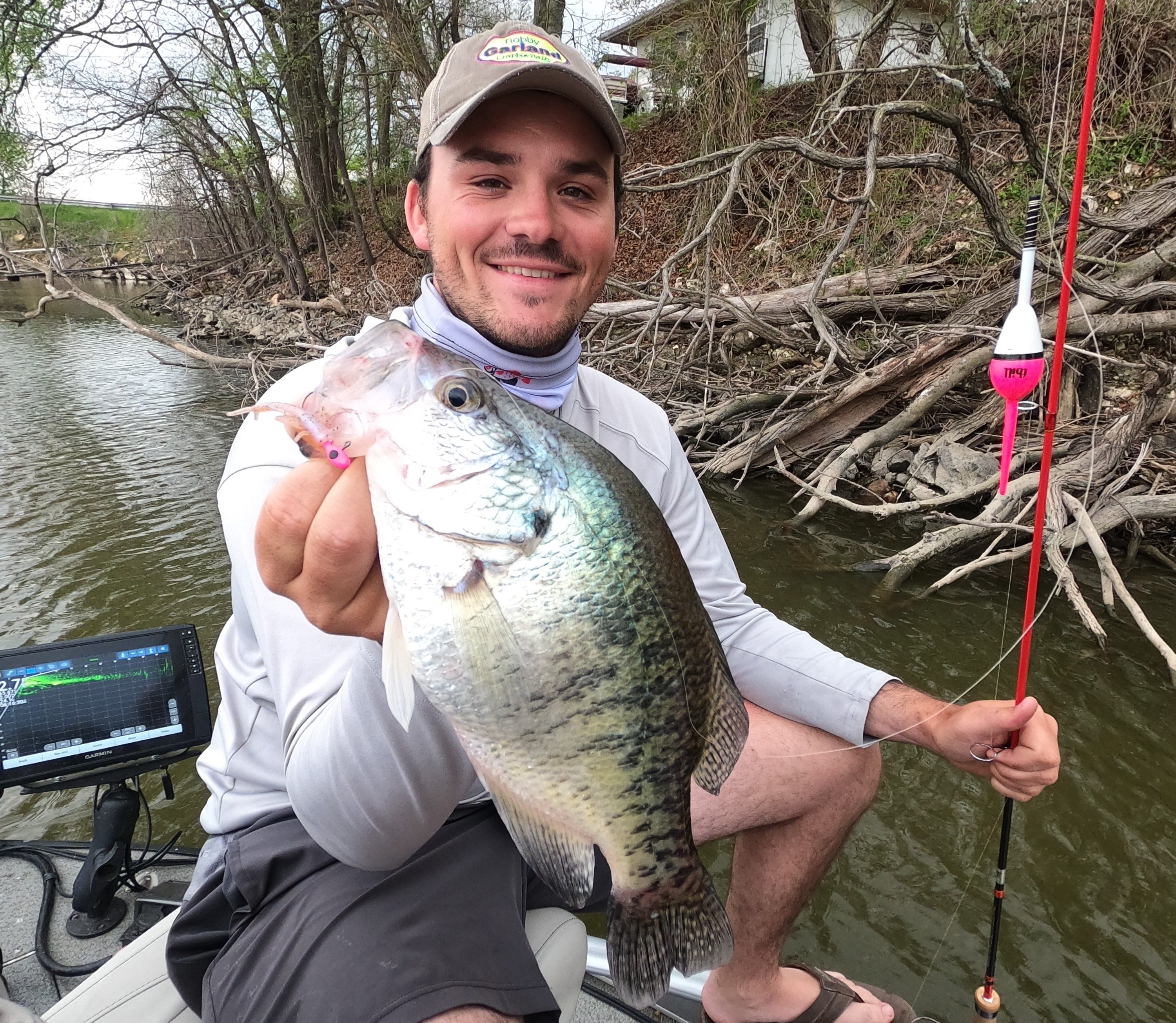

Rising water levels in the spring can have a positive or negative effect on the crappie bite.
“We have a little fluctuation here through our spring seasons,” Pitts said. “We can tell with the rising water level it also brings in the mud. Our Coosa chain of lakes have a little stain to them but if we have some hard rains and the lake is rising the mud goes with it. So that kind of puts a little damper on some of the crappie. A lot of them will just pull back and kind of go into a holding pattern. Now if it is later in the spring the crappie will jump on up there a little tighter to the shallow cover.”
Pitts believes crappie react and adapt better to slowly rising water levels. Winter drawdown occurs on Pitts’ home lakes so during normal spring conditions the lake authorities start holding water in January causing the lake levels to slowly rise about 1 inch a day.
The winter drawdown at Lake of the Ozarks drops the lake level 6 to 7 feet from its summer pool and spring rains determine the rate the lake raises. Blankenship also favors slow rising water in the spring because it is easier to follow the fish moving to shallow water. “Sometimes (a quick rise) will just pull them offshore and make them suspend until everything settles down,” he said.
McDaniel also prefers fishing a lake on a slow rise during the spring. “A slow rise is a lot easier to keep up with the fish, and is not as stressful to the fish,” he said.
“Rising water is usually fresh water coming in from the creeks and stuff and crappie tend to go shallow when that fresh water comes in,” said Hebert, who also prefers fishing slow rising waters. “A fast rise in a river or lake makes the bite turn off until everything settles down again.”
Water Clarity
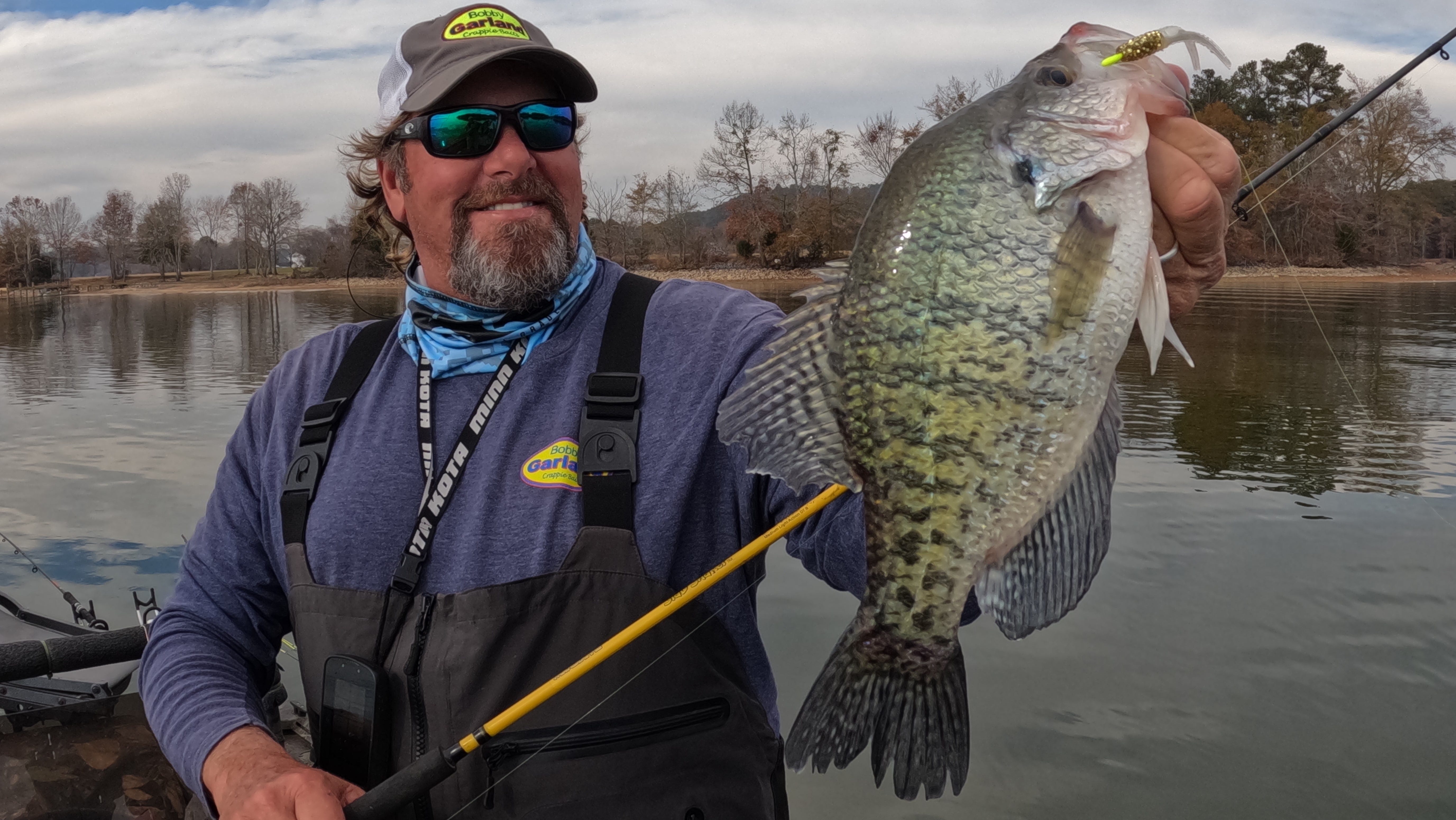

Muddy water absorbs heat and draws crappie to the bank on sunny days. “These fish will get up shallow when the (air) temperature is right and the water stains up because it will warm up quicker,” Pitts said.
McDaniel finds it easier to catch crappie in muddy, shallow water. “I like a little muddier water because the fish are not as spooky,” he said.
Areas where the water colors mix are the most productive spring spots for Hebert. He suggests crappie use the mud line as cover to ambush bait in the clearer water.
“When I see dirty water I tend to think shallow fishing more so than when water is clear,” Blankenship said. He perceives crappie tend to cling tighter to shallow cover such as logs or docks in dirty water.
Moon Phases
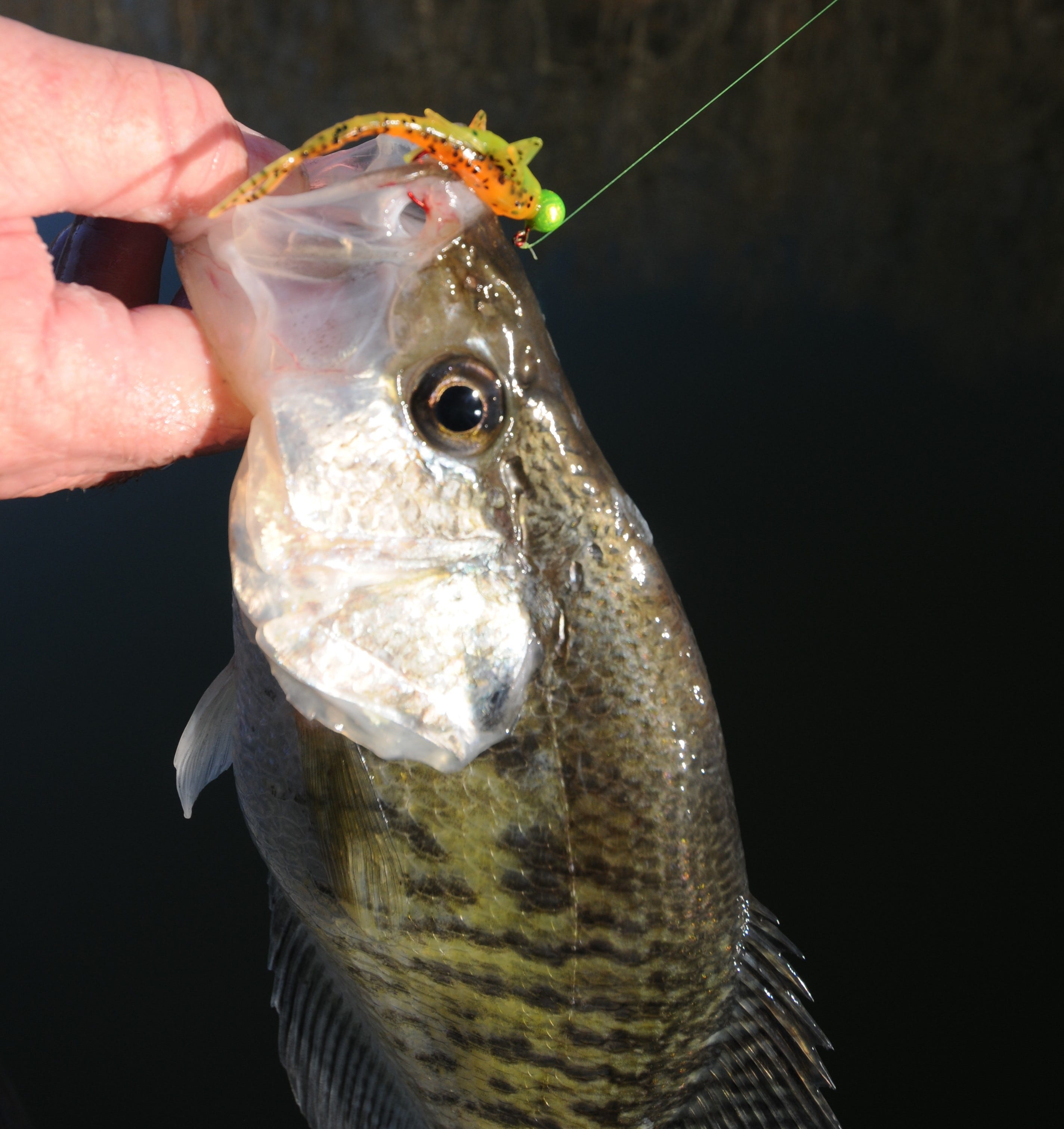

Hebert pays attention to the moon phases in the spring because he notices it influences the crappie spawn. “I do like the days leading up to a full moon in February, March and April,” he said. “Crappie come in waves and I believe the bigger fish spawn first and move up earlier in February and March. Then the smaller fish will come in later.”
Adjustments for Fishing the Flood
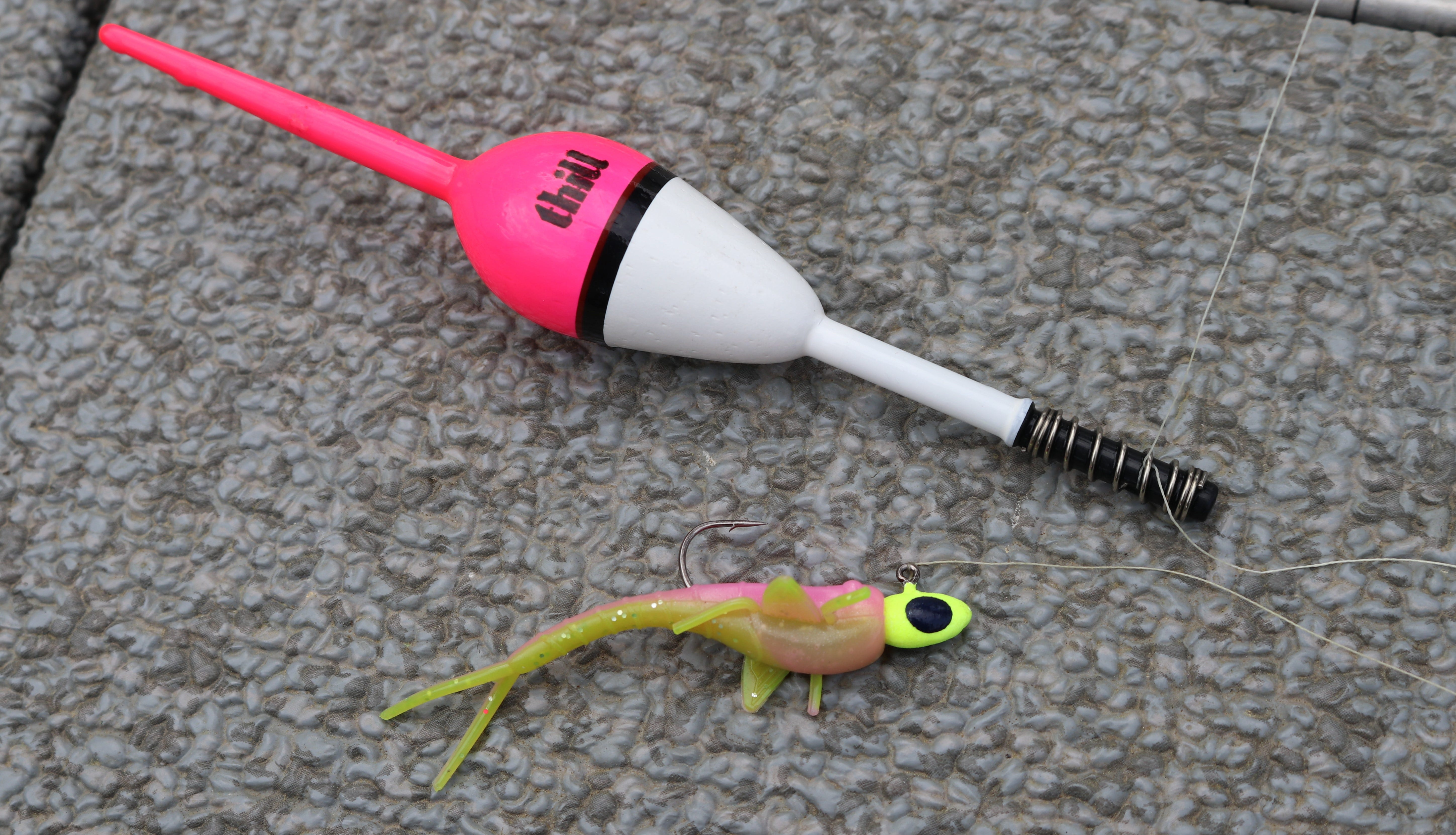

The crappie pros make the following adjustments when lakes and rivers rise into flooding conditions.
- Lee Pitts notices his home lakes experience heavy current during flooding conditions in early spring pushing crappie close to the bottom in the middle of the channel. He long-line trolls for these fish in eddies where the current is slower.
- When his lakes are flooded during the spawn, Pitts dips black-and-chartreuse Minnow Mind’Rs and 3-inch Slab Slay’Rs or tosses the same lures under a float around shallow stumps and laydowns.
- Flooding conditions usually causes muddy water and decreases a crappie’s visibility, so Pitts addshttps://www.lurenet.com/bobby-garland-crappie-rattle to his lures to generate more bites.
- During flooding conditions on Oklahoma lakes, Dustin McDaniel targets crappie in ultra-shallow warm water where he tempts the fish with dark-colored Baby Shads and Slab Hunt’Rs set below a float.
- “In flooding conditions you want to find current breaks because the current is really rolling,” Tim Hebert said. “You want to find humps, points or inside turns of the river or anything that breaks the current because that’s where crappie will be.”



